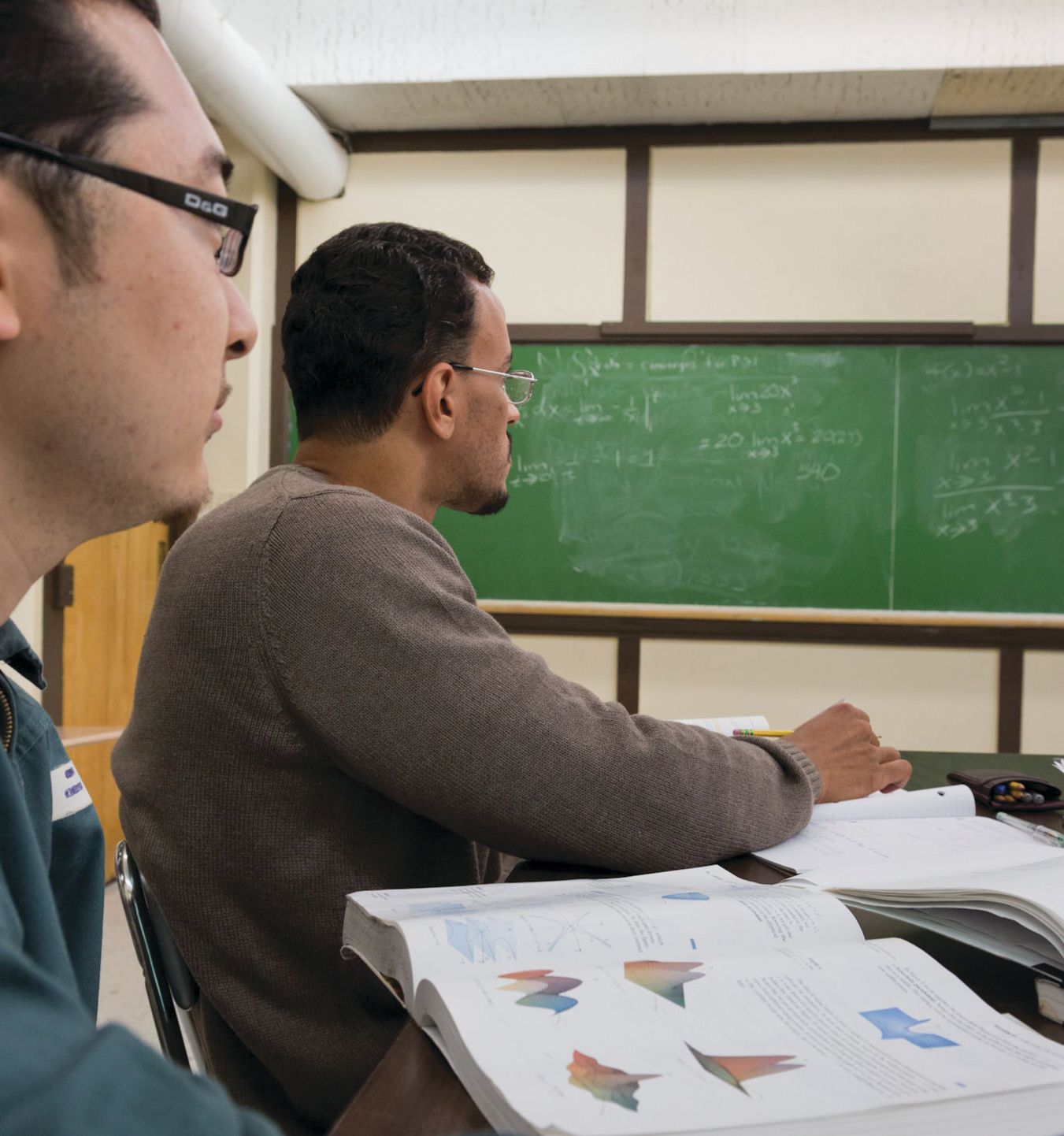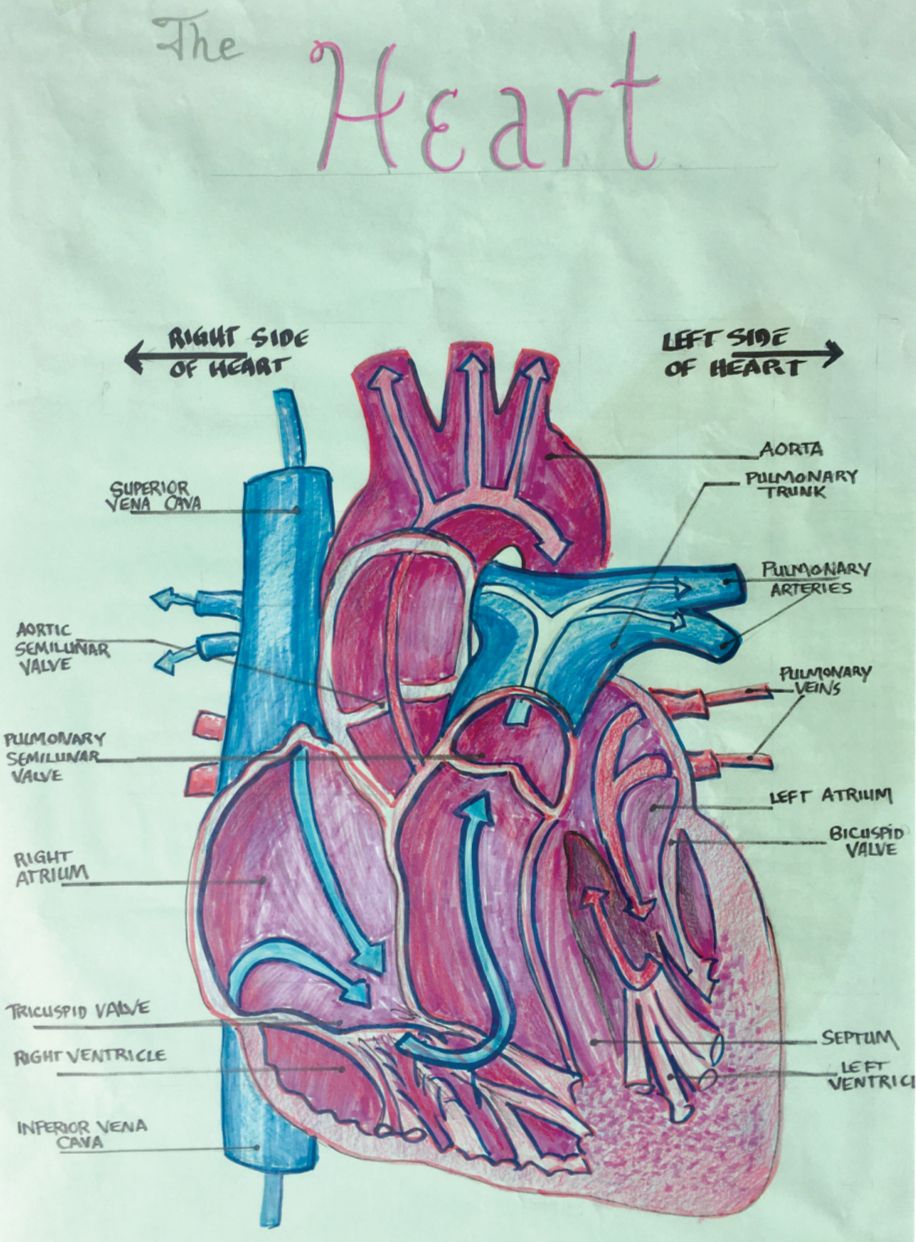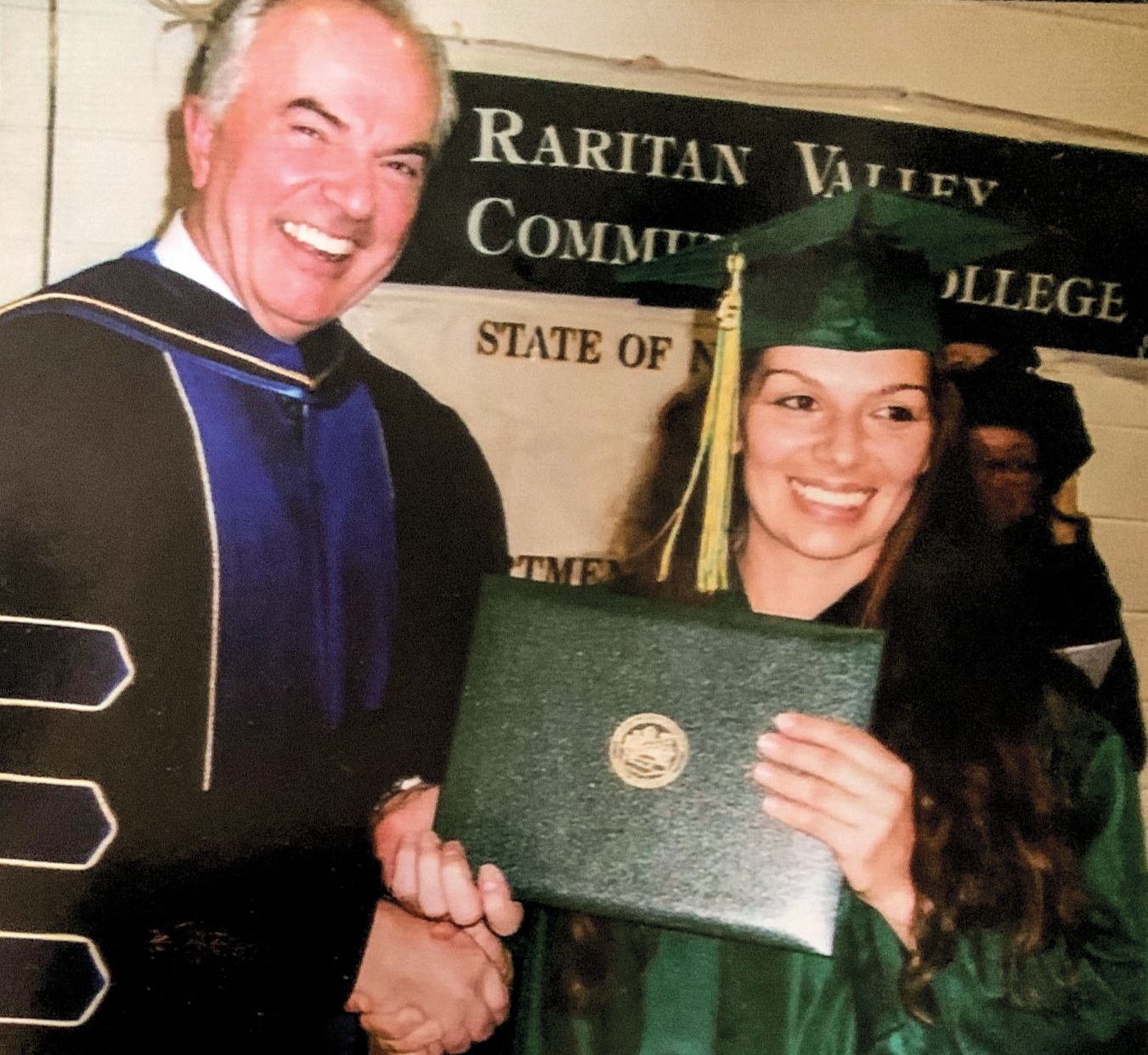Teaching science in prisons brings rewards
DOI: 10.1063/PT.3.4471
Brian Lenardo pulls into the parking lot at San Quentin State Prison in Marin County, California. Heading inside, all he has with him are course materials, a plastic water bottle, and his car keys. He doesn’t wear white, green, or blue; the colors worn in prison are off limits for instructors. After he clears security, he is escorted to an empty classroom. A few minutes later, a couple dozen incarcerated students file in. Class begins.
“I love teaching in prison,” says Lenardo, a postdoc in nuclear physics at Stanford University who volunteers through the Prison University Project. “The students are more motivated and engaged than any other undergraduates I’ve taught. They don’t try to boost their grades. They are not shy about asking for help. They show up prepared. They are there to learn.”
The US is home to 5% of the world’s population but 25% of the incarcerated population, notes Dyjuan Tatro, the government affairs and advancement officer for the Bard Prison Initiative (BPI) in New York State. Although some 95% of people in prison will get out someday, he says, about 40% return within three years. “If we don’t start putting better programming in place and moving away from punishment to rehabilitation, the revolving door will keep revolving.”
What’s more, college in prison saves taxpayers money. The 2014 RAND Corp comprehensive evaluation How Effective Is Correctional Education, and Where Do We Go From Here? found that “the direct costs of reincarceration were far greater than the direct costs of providing correctional education” and that education significantly reduces the incidence of reincarceration. Tatro, who himself has served time, notes that less than 4% of BPI students return to prison.

A Bard Prison Initiative math class in 2013. BPI enrolls more than 300 students across six prisons in New York State. It is part of Bard College and was founded in 1999.
PETE MAUNEY

Many US prisons offer programs for obtaining a high school equivalency diploma. But a high school diploma doesn’t mean someone is college ready, and prisons often offer courses to prepare people for college classes. Traditionally, most programs have focused on humanities, criminal justice, and related areas. Math and science classes are less common. The offerings span à la carte college-credit classes to associate’s and bachelor’s degrees. Some classes even include lab experiments. (For a first-hand perspective, see the interview with Sean Bearden about how he went from taking correspondence courses while incarcerated to being a physics doctoral student; http://physicstoday.org/bearden
Back to basics
College Behind Bars is a four-part documentary series about BPI in New York State that first aired on PBS in 2019. BPI is a competitive, full-time program in which students can earn associate’s and bachelor’s degrees. Among the instructors appearing in the series is MIT history professor Craig Steven Wilder, who describes how he goes “back to a more basic teaching structure” when he teaches for BPI. The students show up “extraordinarily well prepared, and so a lot of the sort of gimmickry … we don’t need here as much, because actually everyone’s done the reading.”
Everything that is brought into prison requires approval. In some prisons, incarcerated students have to use short golf pencils; in others, standard pencils are fine. Students may have limited computer access. Instructors typically use a whiteboard, a blackboard, or an overhead projector. Mixed media are mostly off-limits.
For a biology class at San Quentin, instructor Adam Williamson had his students extract DNA from strawberries. “We got permission to bring in the strawberries, buffers to break up the cells, and chemicals to precipitate DNA,” says Williamson, who taught there for several years when he was a graduate student before joining the faculty at Bryn Mawr College in Pennsylvania last fall. Another experiment involved quantifying aspects of photosynthesis. “The labs worked well,” he says. “There was no lack of rigor.”
Courses in geology and human biology have always been offered through Returning & Incarcerated Student Education (RISE) at Raritan Valley Community College, says director Sheila Meiman. Started in 2009, the RISE program serves seven prisons in New Jersey. For human anatomy, the models are made of plastic. For biology classes, instructors bring in compounds that students mix and microscopes with premade plastic slides. Calculus-based physics, she says, was “sort of our Holy Grail.”
Raritan Valley’s Peter Stupak guided the modifications to the physics lab equipment to make it acceptable for a prison environment. “Several items didn’t feel right to our corrections partners,” he says. “We modified the list and finally got it to the point where it was acceptable.” A strong relationship with the corrections partners is necessary, he says. The authorized items for physics labs include a plastic car with low-friction wheels instead of a massive block and a track made of foam instead of metal, measuring tape and protractors made of paper, and induction cookers in place of hot plates.

This drawing was made by students at Fort Dix Federal Correctional Institution in New Jersey. Groups of four students prepared lectures on different organs for the physiology section of a biology course in 2017. Matthew King taught the course through Princeton University’s Prison Teaching Initiative. The drawing is by Blaine Dorsey III, Jeramy Eddington, Kyle Inch, and Brandon Quinn.

Goni Halevi, who is working on her PhD in astrophysics at Princeton University, leads the four-person team that teaches the RISE physics class, which debuted in January with three students at East Jersey State Prison. She volunteers through the university’s Prison Teaching Initiative (PTI), which coordinates with Raritan Valley for course offerings and college credit. Since restrictions were enacted to slow the spread of the coronavirus, Halevi’s team and instructors for other courses are completing the semester through written notes, worksheets, videos of the lab experiments, and other distance-learning means. “The students have put in so much effort, we want to do everything we can to make sure they can finish and get the credit they deserve,” Halevi says.
As a graduate student in biophysics at Princeton, Matthew King spotted a feature story about PTI on the university’s homepage and decided to apply. “It was half personal, half political,” he says. He taught environmental science in 2014. “We sat in a semicircle, the students were engaged, they had done the reading—which is unusual for college students. I was hooked.” King went on to design experiments and help introduce labs to the PTI program. Now a postdoc at Washington University in St Louis, he is teaching biology through the school’s prison education program.
The motivation to study while in prison varies, says Mark Krumholz, an astrophysicist at Australian National University who has taught at four US prison facilities and cofounded PTI in 2005. The program now has two paid administrators and 100–120 volunteers who teach 20–30 courses per semester. Some people in prison take courses to pass the time, he says. Others want to earn a degree in tandem with their children outside or otherwise prove something to their families. Many want to prepare for a better future. “Most had never really engaged in anything academic,” Krumholz says, “so the sense of accomplishment they feel when they discover they are good at something is a huge revelation. I found that very rewarding.”
Uncomfortable spaces
College classes are available in a smattering of county jails in addition to state and federal prisons—wherever programs have sprung up. New instructors worry about feeling intimidated in the prisons, says PTI director Jill Stockwell, “but the students bend over backwards to make instructors feel safe and respected. They know it’s not a comfortable space to come to.”
Between long drives to prison facilities, waits to get in, and security measures, teaching in prison takes more time than teaching on a college campus. Instructors have to work around students missing class and canceled classes due, for example, to prison lockdowns. Communication with incarcerated students outside of class is tricky. And class time and duration may have to be scheduled around prison constraints; for example, at Lockhart Correctional Facility, the Texas Prison Education Initiative—which was started in 2018 and is supported through donations and crowd funding—offers only evening classes because the prison uses the classroom space in the daytime.
For their part, students have to arrange their study time around lockdowns, quarantines, crowded conditions, noise, and prison schedules, including frequent head counts. In College Behind Bars, several students say they study best in the wee hours of the night. Many of them work and don’t have much spare time, and getting school supplies can be hard. “In New York State prisons, everyone has a job—and you have 100 guys sweeping the same hallway. It’s a joke,” says Tatro. BPI students are off the hook for such make-work chores.

Summer Sprofera (right) graduated from Raritan Valley Community College in August 2015; the college’s president, Michael McDonough, congratulates her. She earned her associate’s degree while incarcerated in the Edna Mahan Correctional Facility in Clinton, New Jersey. (Photo provided by Summer Sprofera.)

“Prison is not conducive to getting a college education,” says Tatro, who got out of the New York State prison system in 2017. “You can’t get research materials in a timely manner, you don’t have access to huge libraries, there is no internet access. Classes are interrupted. Professors may assign 42 books, but the prison only allows 25 in a cell. The list of hurdles is absurd.”
Tatro learned about BPI by chance from an episode of 60 Minutes that aired in 2007. “Seeing that segment allowed me to see myself as a college student,” he says. It took him six years and repeated prison transfers to finally land in one of the six facilities where the BPI program was offered.
After his release, Tatro completed his bachelor’s degree in math at the main Bard campus in Annandale-on-Hudson in 2018. Since then he has worked for a US congressman and managed a data-collection project for a software developer. Now at BPI, he works with legislators to allocate public funding for college education in prison and for reentry services. Unlike many higher-education programs in prisons, BPI does not rely on volunteer instructors. The program is “essentially a department of Bard College responsible for the education of 300 students in prisons,” says Tatro. Over the past decade, BPI has partnered with 14 other universities and colleges to launch similar programs.
Dameon Stackhouse started taking classes in 2010 while he was incarcerated in New Jersey. “I took anything and everything—psychology, precalculus, calculus, Arabic—because I knew that once I was released, I would need to do something that used my mind,” he says. He wrote essays on his own to prepare himself for college. “I could see the big picture.” In the prison classes, he says, “we all had drive, we pushed ourselves, and we didn’t let anyone else fail.” Today he is at Rutgers University working on his master’s degree in social work, with a focus on autistic people, and plans to do a PhD.
At the urging of her instructor in an office skills class in prison, Summer Sprofera started taking classes through Raritan Valley. She knew she liked science: She semisecretly grew tomato plants that she started from seeds she collected from the mess hall. “It changed the environment in the prison,” she says. “The women were away from their kids, they all became protective of the plants. It brought us all together.”
Even with a degree, reintegrating into society can be challenging for formerly incarcerated people. After serving nine years, Sprofera got out in 2016 and continued her studies at Rutgers. She commuted to school because people with felony convictions are not allowed to live on campus. She confided in a professor about her criminal record and learned that getting licensed in her preferred field of landscape architecture would be tough, so she switched to environmental planning and design. She graduated last year and is still seeking a job in her field. “Society is not ready for us,” she says. “Even if we have a degree, once it comes to the background check, it’s hard to be accepted. I’d be more accepted in a prison-oriented field like social work.”
More about the Authors
Toni Feder. tfeder@aip.org
